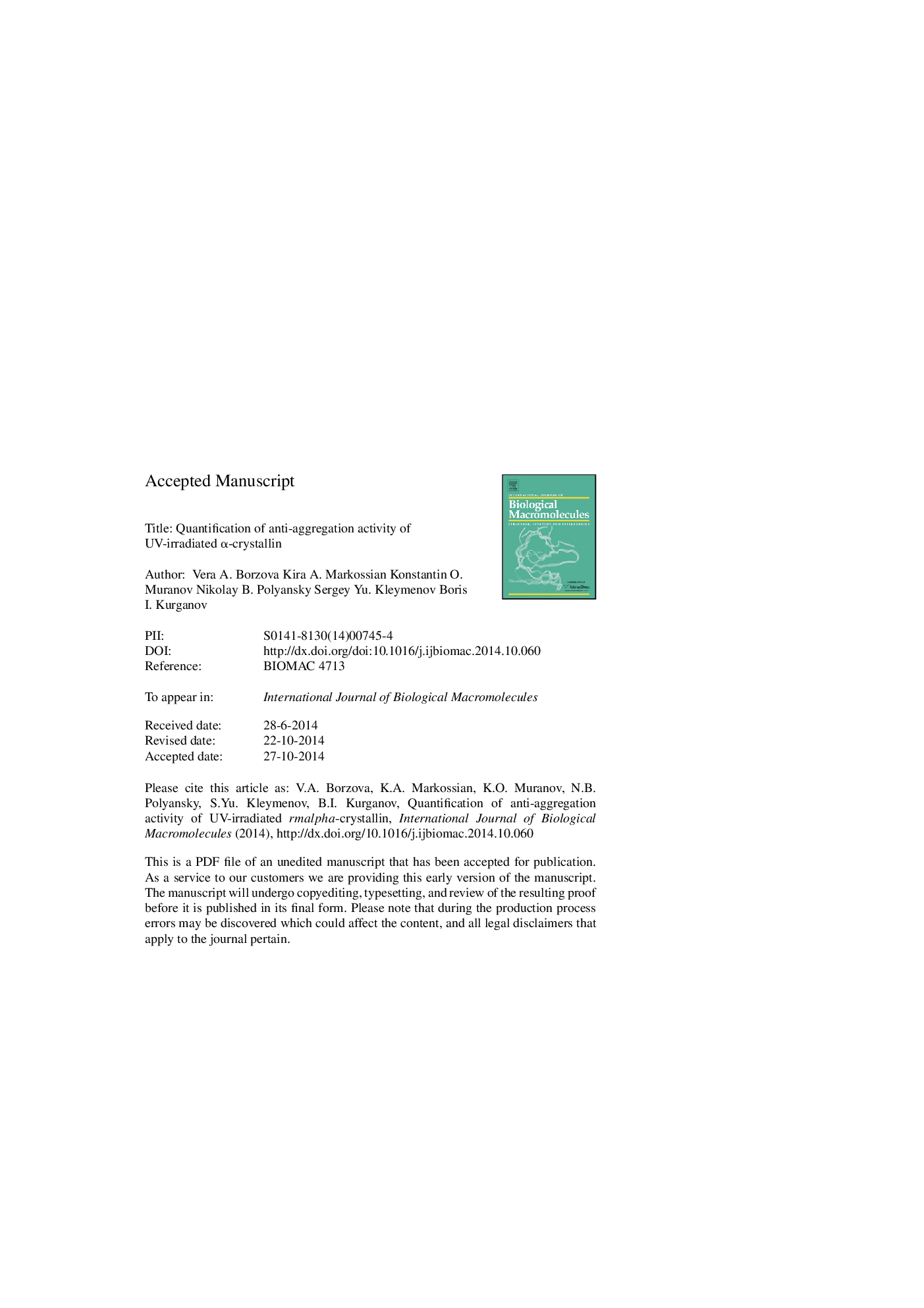| Article ID | Journal | Published Year | Pages | File Type |
|---|---|---|---|---|
| 8332030 | International Journal of Biological Macromolecules | 2015 | 38 Pages |
Abstract
Ultraviolet radiation is a risk factor for cataractogenesis. It is believed that enhanced rates of lens opacification and cataract formation are the results of gradual loss of chaperone-like efficiency of α-crystallin upon exposure to UV light. To characterize chaperone-like activity of α-crystallin damaged by UV irradiation, a test system based on dithiothreitol-induced aggregation of holo-α-lactalbumin from bovine milk was used. The adsorption capacity of α-crystallin (AC0) with respect to the target protein (α-lactalbumin) was used as a measure of anti-aggregation activity of α-crystallin. The data on SDS-PAGE testify that UV irradiation of α-crystallin results in covalent cross-linking of subunits in α-crystallin oligomers. The dependence of AC0 value on the irradiation dose was compared with the UV-induced diminution of the portion of native α-crystallin estimated from the data on differential scanning calorimetry. On the basis of such comparison a conclusion has been made that the loss in chaperone-like activity is mainly due to UV-induced denaturation of α-crystallin subunits. Cross-linking of remaining native subunits leads to an additional decrease in anti-aggregation activity.
Related Topics
Life Sciences
Biochemistry, Genetics and Molecular Biology
Biochemistry
Authors
Vera A. Borzova, Kira A. Markossian, Konstantin O. Muranov, Nikolay B. Polyansky, Sergey Yu. Kleymenov, Boris I. Kurganov,
